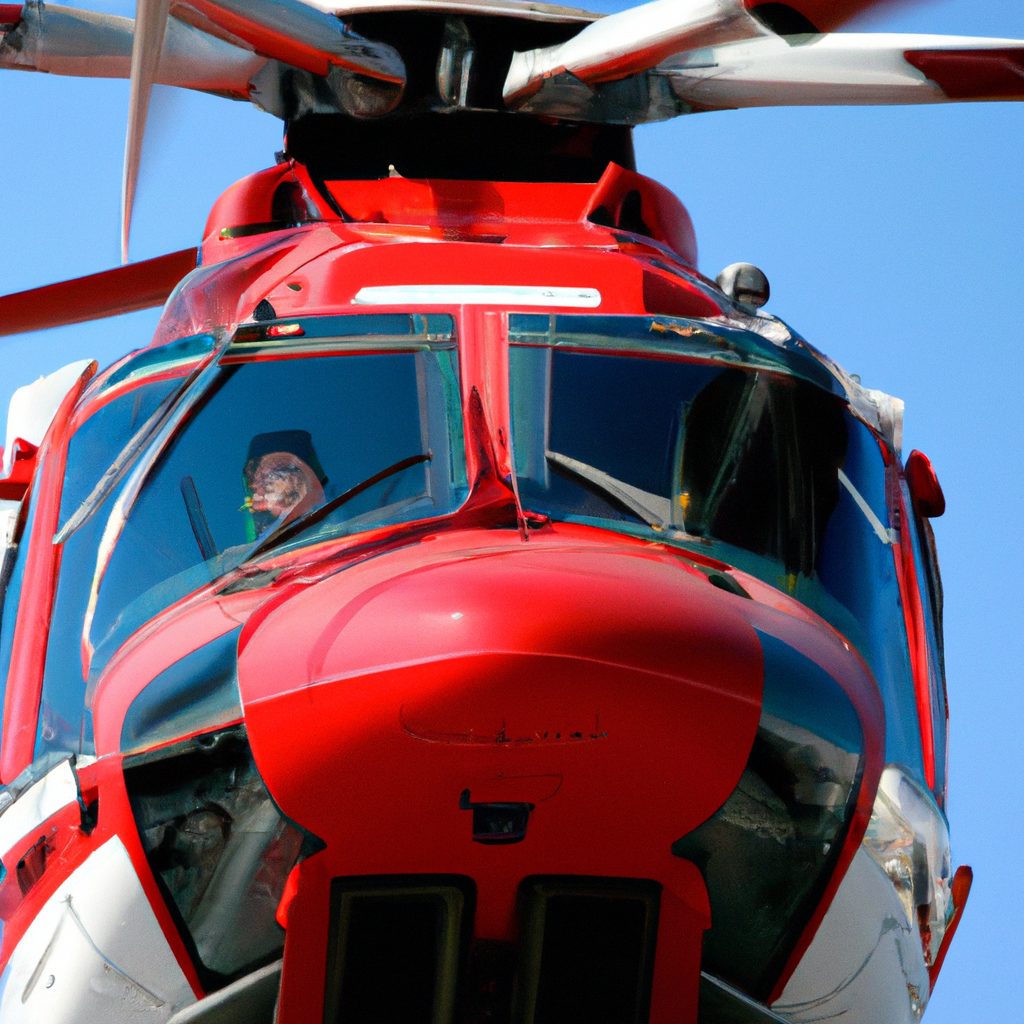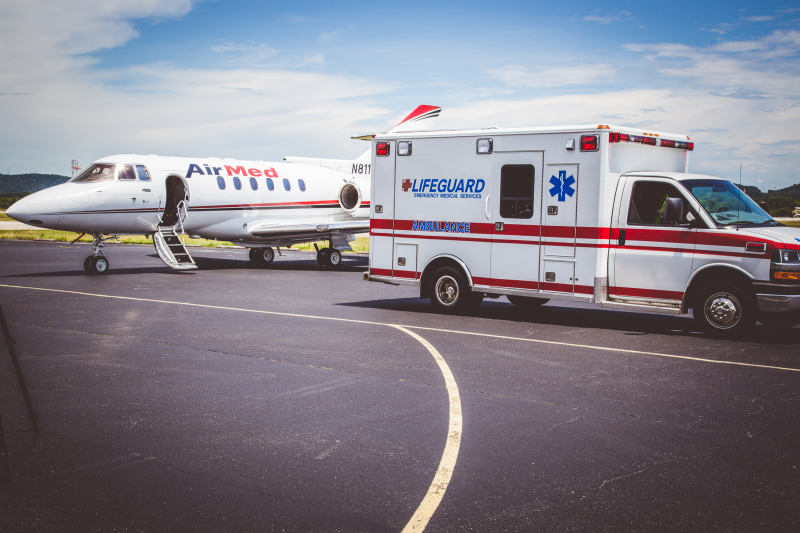Let’s talk about something that is absolutely crucial when it comes to the world of air ambulances: team training and communication. Now, picture this scenario: you’re in an emergency situation and you need immediate medical assistance. The last thing you want is a team that isn’t properly trained and can’t communicate effectively with one another. That’s why it’s so important for air ambulance crews to undergo rigorous training and maintain open lines of communication at all times. From pilots to medical professionals, everyone on the team needs to be on the same page and work together seamlessly to ensure the best possible outcome for the patient. So, let’s dive into why team training and communication are absolutely essential in the world of air ambulances.

The Importance of Team Training
In the field of air ambulances, team training plays a crucial role in ensuring the efficient and effective delivery of medical services. By enhancing proficiency and expertise, promoting consistency and standardization, improving problem-solving skills, and reducing errors and accidents, team training is an essential component of providing quality care to patients in need.
Enhances Efficiency and Effectiveness
One of the key benefits of team training is its ability to enhance efficiency and effectiveness within the medical team. By increasing proficiency and expertise, team members become more skilled at their respective roles and can perform their duties with greater ease and accuracy. This translates to faster response times and better patient outcomes.
Moreover, team training improves coordination and collaboration among team members. When everyone is on the same page and understands each other’s responsibilities, it becomes easier to work together seamlessly. This streamlines workflow and processes, allowing the team to deliver care more efficiently.
Promotes Consistency and Standardization
Consistency and standardization are vital in the field of air ambulances, where every second counts and the quality of care directly impacts patient outcomes. Team training ensures uniformity in service quality by establishing clear guidelines and protocols for all team members to follow. This ensures that patients receive the same level of care regardless of which team member is attending to them.
Furthermore, team training enhances patient safety and care by promoting standardized practices. When team members are trained to follow the same procedures, there is a reduced risk of errors or omissions that could compromise patient well-being. Additionally, standardized practices facilitate the seamless transition of tasks, allowing team members to pick up where others left off without any confusion or delays.
Improves Problem-Solving Skills
In high-stakes situations, quick and effective problem-solving is crucial. Team training can significantly improve the problem-solving skills of air ambulance teams by encouraging critical thinking, fostering creative solutions, and enhancing decision-making abilities.
Through team training exercises and simulations, team members are exposed to various scenarios that require them to think on their feet and find solutions. This helps them develop the ability to analyze situations, consider alternatives, and make informed decisions under pressure. By honing these skills, air ambulance teams can adapt to unexpected challenges and provide the best possible care to their patients.
Reduces Errors and Accidents
Patient safety is paramount in the field of air ambulances, and team training plays a pivotal role in reducing errors and accidents. By increasing attention to detail, enhancing foresight and preparedness, and minimizing miscommunication and misunderstandings, team training aims to create a safer environment for both patients and team members.
Training programs emphasize the importance of paying attention to every detail, no matter how small. By instilling this mindset in team members, the likelihood of overlooking critical information or making avoidable mistakes is significantly reduced. Additionally, team training enhances foresight and preparedness by equipping team members with the knowledge and skills to anticipate potential risks and take proactive measures to mitigate them. This proactive approach reduces the occurrence of accidents and promotes a safer working environment.

The Importance of Communication
In addition to team training, effective communication is another crucial aspect of providing quality air ambulance services. Clear and effective communication ensures the exchange of information between team members, enhances safety and risk management, builds trust and confidence, and facilitates feedback and continuous improvement.
Ensures Clear and Effective Information Exchange
In the fast-paced and high-pressure environment of air ambulances, clear and effective communication is essential to ensure that critical information is accurately and timely conveyed. This is particularly important for patient assessment and diagnosis, where accurate information exchange directly impacts the quality of care provided.
By fostering open and transparent communication channels, air ambulance teams can optimize the exchange of vital information. This includes everything from patient history and condition updates to medication dosages and treatment plans. Ensuring clear and effective information exchange enables team members to make informed decisions, provide appropriate care, and improve patient outcomes.
Enhances Safety and Risk Management
Effective communication is also essential for enhancing safety and risk management within air ambulance teams. By enabling early identification and response to hazards, improving incident reporting and investigation, and reducing medical errors and adverse events, communication plays a crucial role in maintaining a safe working environment.
When team members communicate effectively, they can quickly identify potential hazards and take immediate action to mitigate them. Effective incident reporting and investigation further help in identifying the root causes of safety incidents, allowing teams to implement corrective measures and prevent future occurrences. Additionally, clear communication reduces the likelihood of medical errors and adverse events by ensuring that all team members are aware of any changes or updates.
Builds Trust and Confidence
Trust and confidence are vital in any healthcare setting, and effective communication is the foundation for establishing these qualities within air ambulance teams. By creating a supportive and open environment, establishing rapport and understanding, and promoting empathy and compassion, effective communication builds trust among team members.
When team members communicate openly and support one another, they create a conducive environment for collaboration and cooperation. This allows for the exchange of ideas and constructive feedback, leading to improved decision-making and better patient outcomes. Furthermore, effective communication promotes empathy and compassion among team members, which is crucial when dealing with patients who may be in distress or experiencing life-threatening situations.
Facilitates Feedback and Continuous Improvement
Lastly, effective communication facilitates feedback and continuous improvement within air ambulance teams. By enabling performance evaluation and development, identifying areas for training and development, and encouraging adaptation and innovation, communication plays a vital role in fostering a culture of learning and growth.
Through regular and constructive feedback, team members can assess their performance and identify areas for improvement. This feedback loop ensures that training needs are addressed and that team members can continually enhance their skills and knowledge. Additionally, effective communication encourages adaptation and innovation by allowing team members to share ideas and insights that can lead to improvements in processes, protocols, and patient care.
In conclusion, both team training and effective communication are of utmost importance in the field of air ambulances. By enhancing efficiency and effectiveness, promoting consistency and standardization, improving problem-solving skills, and reducing errors and accidents, team training ensures the delivery of high-quality care to patients. Similarly, effective communication ensures clear and accurate information exchange, enhances safety and risk management, builds trust and confidence, and facilitates feedback and continuous improvement. Together, these two crucial aspects form the foundation for providing excellent air ambulance services and saving lives.




